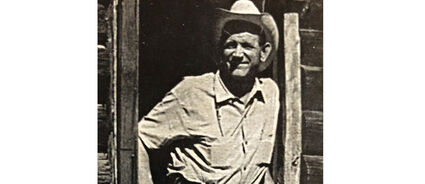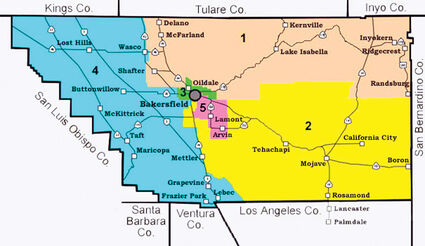Ernest Twisselmann: a Kern County rancher-turned-botanist
Mountain Tales: First-hand stories of life in Tehachapi
August 6, 2022

Jon Hammond
Twisselmann was a Kern County rancher who became interested in botany after a large number of his family's grazing sheep were killed by ingesting poisonous plants in 1952.
Ernest Twisselmann was a rancher and the author of A Flora of Kern County, the definitive book of the 1,875 various species and subspecies of plants that he found growing in sprawling Kern County. He began collecting plant specimens in the Temblor Range at the western border of the county in 1952, and finished fieldwork in 1966. His book was published in 1967, when the Fickert family still owned Bear Valley. He was an amazing and inspiring man. Here are some excerpts from his book, which stands alone as a guide to Kern County plants.
"Kern County, California's third largest and the nineteenth largest in the United States, is rectangular except for a series of right-angled set-backs on the western border. From east to west it is 130 miles wide; from north to south, 67 miles. It has a land area of 8,163 square miles or 5,160,960 acres; this is larger than the land area of Massachusetts, New Jersey or Hawaii, or of Connecticut, Delaware and Rhode Island combined.
The central Tehachapi Mountains. . . the northwest side is dominated by Bear Mountain; the southeastern by the complex of Cummings Mountain, Tehachapi Peak and Double Mountain. These summits are forested and floristically are essentially a southern extension of the Sierra Nevada flora.
Between them lie Cummings, Bear, Brite and Tehachapi valleys. These montane valleys are approximately 4,000 feet elevation; their soils are rich deep alluviams. Early in this century, they were planted extensively to orchards, primarily of pears, but drought and adverse markets resulted in these being abandoned in the late 1920s and early 1930s. The hill country is devoted to cattle and sheep.
Of the four valleys, Brites and Cummings have long been farmed. Tehachapi Valley, the area of greatest settlement, is highly developed for farming and for suburban residences. Only Bear Valley is relatively unspoiled; owned by the same family for many decades and served by no public road, its present vegetation with extensive vernal pools on the valley floor has probably not changed substantially in the past 100 years.
In recent years, the character of the Tehachapi region has greatly changed. Once again the orchards have been planted; this time dependent on irrigation rather than rainfall. New specialty crops, such as grass seed and lawn turf, have become important in the mountain valleys. Almost all of the old ranches have been sold, mostly to Los Angeles people of means, either for country estates of speculative investments. The old cement plant at Monolith has been expanded, a large new one is in operation in Oak Creek Canyon. Finally, the state is building a large prison in Cummings Valley."
– Ernest Twisselmann






